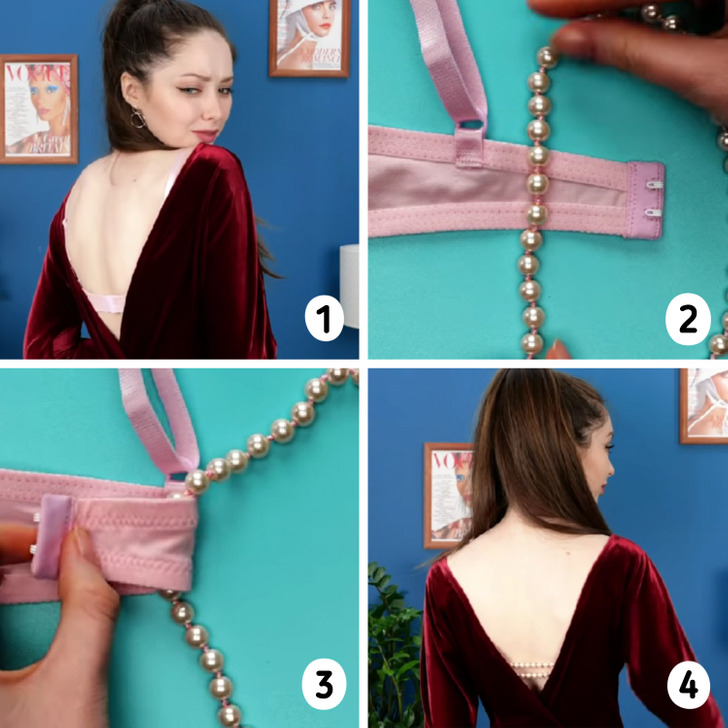10+ Tips About Bras That You Didn’t Actually Know but Definitely Should
A bra is an essential piece of a woman’s wardrobe. As such, the wrong bra can waste your efforts, even if you’re wearing the most beautiful and expensive clothing in the world. Choosing the right bra varies according to body structure, breast shape, health, and the dress you’ll be wearing it under.
The anatomy of a bra
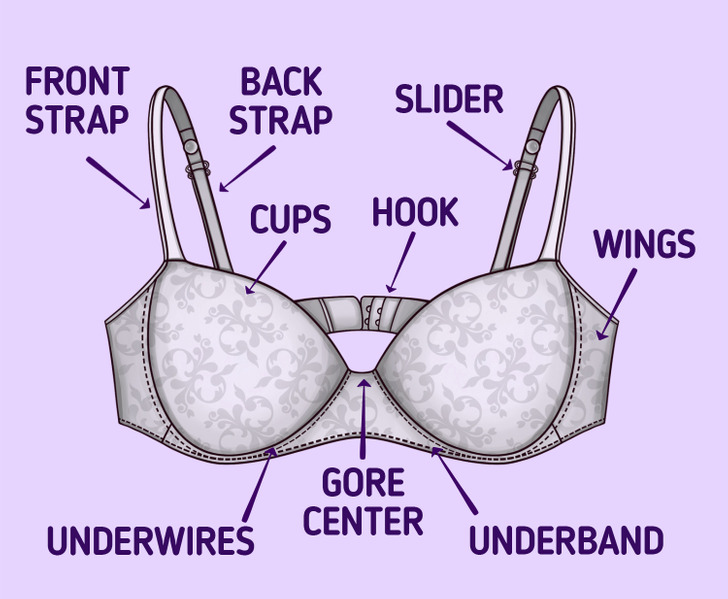
1. The underband or the bottom band is the part that wraps around your body. It must fit snugly against the body to support your breasts. Along with the straps, the underband helps the bra stay put on your body. The bra’s underband must also be snug enough but not so tight that you can’t easily slide 2 fingers underneath it.
2. The cups are the front parts of the bra that enclose and hold the breasts. They help shape the breasts and provide support as well. Cups come in different styles: rigid, soft, padded, non-padded, molded, seamed, etc.
3. The straps are bands that go from front to back and over the shoulders, providing support. You can adjust your straps so that they aren’t too tight or too loose, and they should never fall off your shoulders. They come in different styles, like with and without stretch, with and without padding, adjustable and non-adjustable, etc.
4. The underwire is a thin metal piece sewn into the bra at the base of the cups. It provides additional support to your bra. The wires at the front should sit flat at the breastbone. Please note that the underwire must not put immense pressure on or dig into your body.
5. The gore, or the center front, is the central part that connects the bra cups. It ensures that the underwire stays in place. For high-strength bras, the gore is longer to support a larger bust size.
6. The wings are located at the sides of the bra, and when you fasten the bra itself, it brings the underband forth in a way that secures the bra to your body and pulls the wires in a way that helps them sit around the breasts.
7. The hook and eye closures help fasten the bra around your body. They are placed in the back or front — the latter is when you have a front open bra. It’s recommended to begin from the last column of the hooks and then use the inner hooks as the underband gradually loosens up on your body. If you don’t want to use bras with hooks, sports bras are also an option.
8. The slider helps you loosen or tighten the bra straps by adjusting them forward or backward.
1. The bra rides up in the back
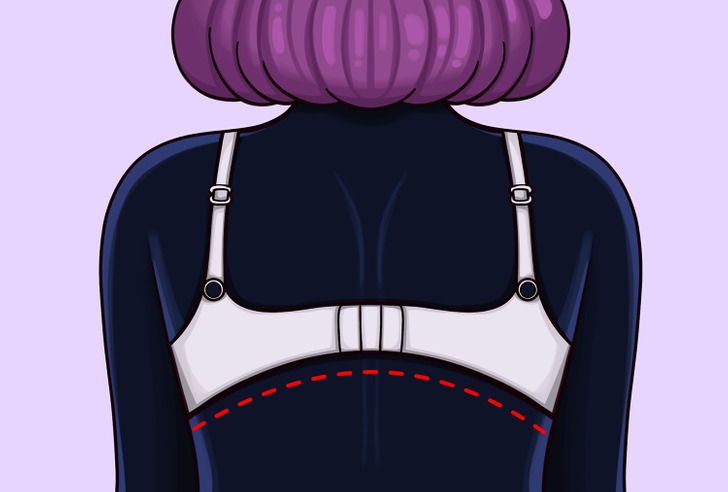
2. Bra straps fall or slip off the shoulder
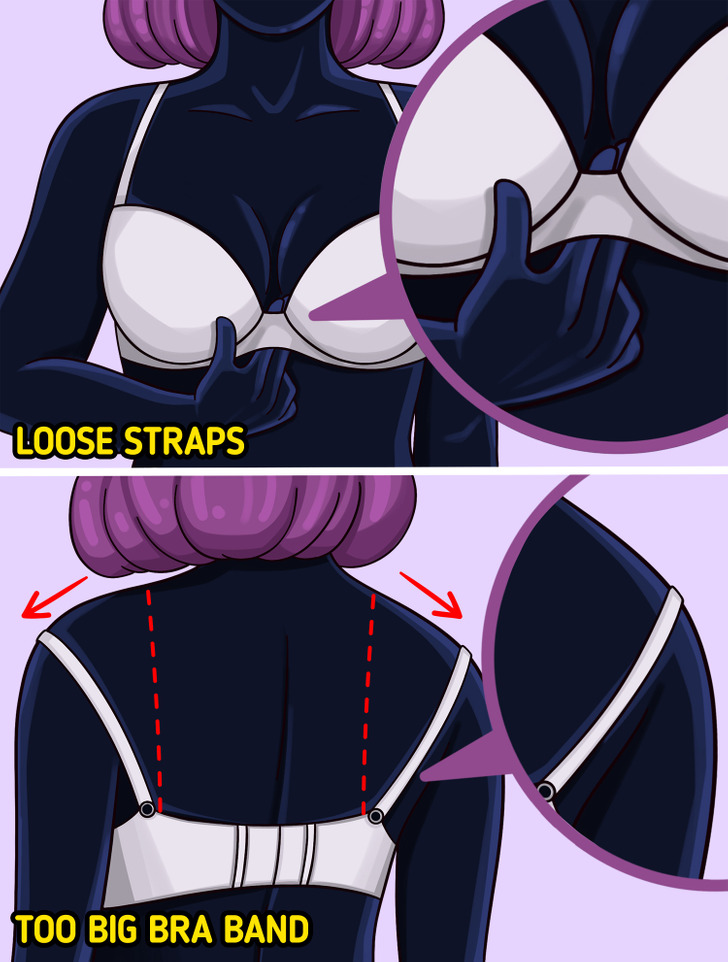
- If your strap isn’t snug enough on your shoulder, then tighten the strap. Test to see if you can fit 2 fingers comfortably between the strap and your shoulder.
- If your bra band is too big, you may still have slippage, even if your straps are tight enough. Over time, bra straps stretch out, which causes the straps to fall off your shoulders. To bring the straps closer, you can try a smaller band size. Make sure your bra band isn’t too large.
- If you have narrow shoulders or a more petite frame, you should avoid balconette bras or other styles with wide shoulder straps.
3. Straps that dig into your shoulders
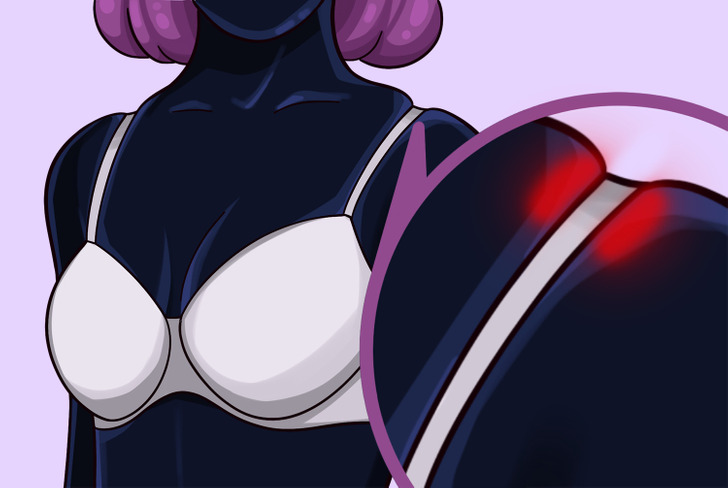
When the bra straps dig in, it may cause redness, soreness, or deep grooves and pain in the shoulder, and this can cause some women to suffer from headaches and nerve problems. For the most part, this is preventable.
- If your band is too loose or too big, your straps can’t do all the lifting and provide all the support. The weight of your breasts pulls down on the straps, and the straps start doing all the supportive work. It then puts a lot of strain on your shoulders and causes painful digging.
- If your bra straps are too tight, this may increase lift and support in the short term, but soon after, they may start to dig in. Try loosening the straps or opt for a larger cup or smaller band size.
- If the straps are too thin, they may dig in too. A bra with thicker straps is reasonable to use to protect the shoulders for those with a larger, heavier bust.
4. Side breast spillage
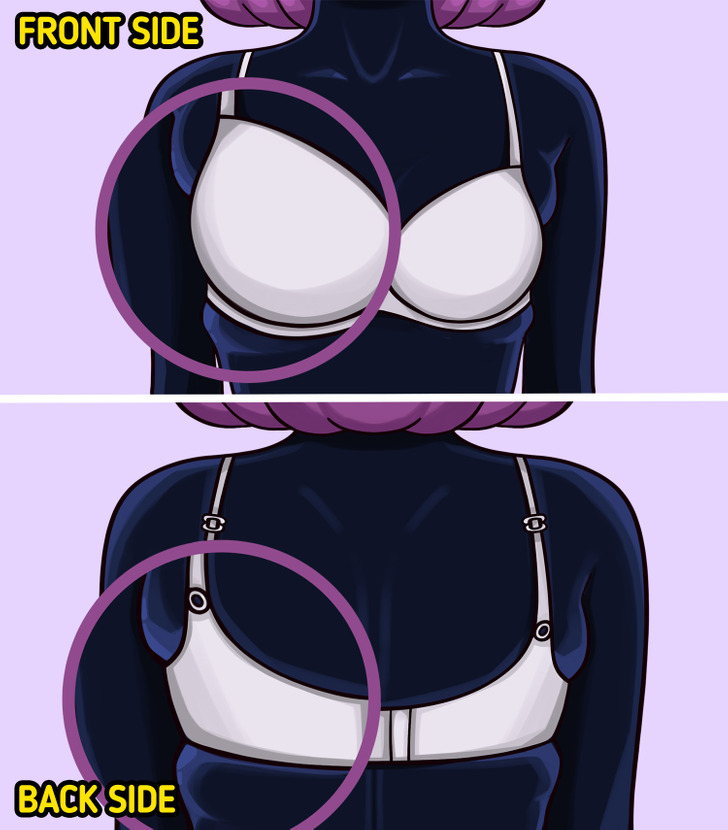
A correctly fitted bra should encircle your breasts. There’ll be enough coverage under your arms, and the excess breast tissue won’t spill out. The underwire should extend to the sides of your body, near your underarms, and it should not be sitting on your breasts.
- Side spillage or overflow occurs if your bra is too small in the band or the cup. Excess skin will be visible under the arm and wherever else. To prevent this, wear the right size bra. You can look for a bra with the same band size but get the cup one size bigger. Or you can try going for a full coverage bra with a wider band and a high-cut side.
5. Quad breasts
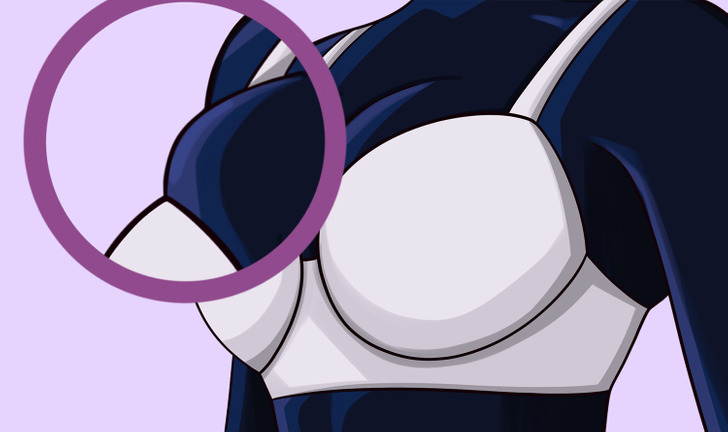
When the top edge of the bra’s cups cuts into the breast tissue, quad breasts occur on the top and are easily seen under your clothes. Make sure that you’re wearing the correct bra size. Sometimes, you may want to have cleavage. Still, you don’t need to wear a bra that’s too small. There are push-up bras that can enhance your bust.
- If your bra is too small in the cup or too tight in the straps, you can experience quad breasts. To prevent this, you can adjust your straps.
- If you’re wearing the wrong bra style that is not suited to your breast type, quad breasts can occur. If this happens, change the style of your bra, avoid demi bras, and opt for a full-coverage bra.
- If you have soft breast tissue, choose something that molds to your shape and in a style with enough stretch in the cup. Usually, this happens when a woman with soft breast tissue wears a bra style that doesn’t mold to her shape, like a pre-formed, foam-lined bra. As a result, the stiff edges of the cup cut into her breast tissue, creating a visible line underneath fitted clothing.
6. Uneven (asymmetrical) breast size
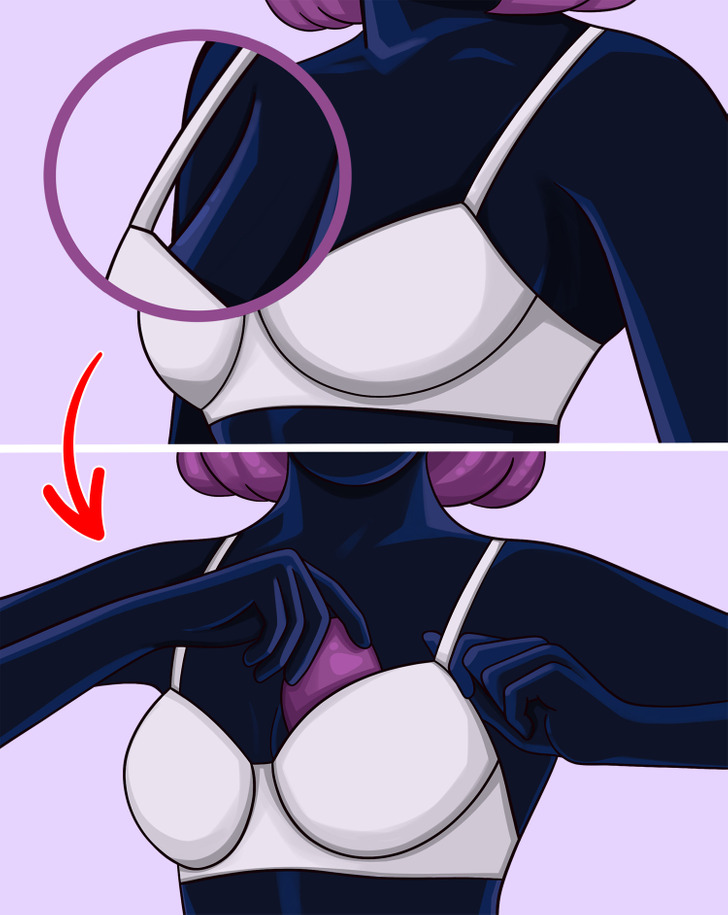
Like other organs, it’s normal to have uneven breasts, with one slightly larger than the other.
- If you have uneven breasts, buy a bra according to your bigger one, and fit your bras to the larger side, leaving some space in the smaller breast cup. You can use silicon pads to insert into the bra and fill out the area in the smaller cup.
- You might also want to consider the material of the bra. Seek bras with cups made of softer and more supportive material, like memory foam. It helps contour your body, deals with the bra gap, and makes it look like a natural fit.
7. Escapees
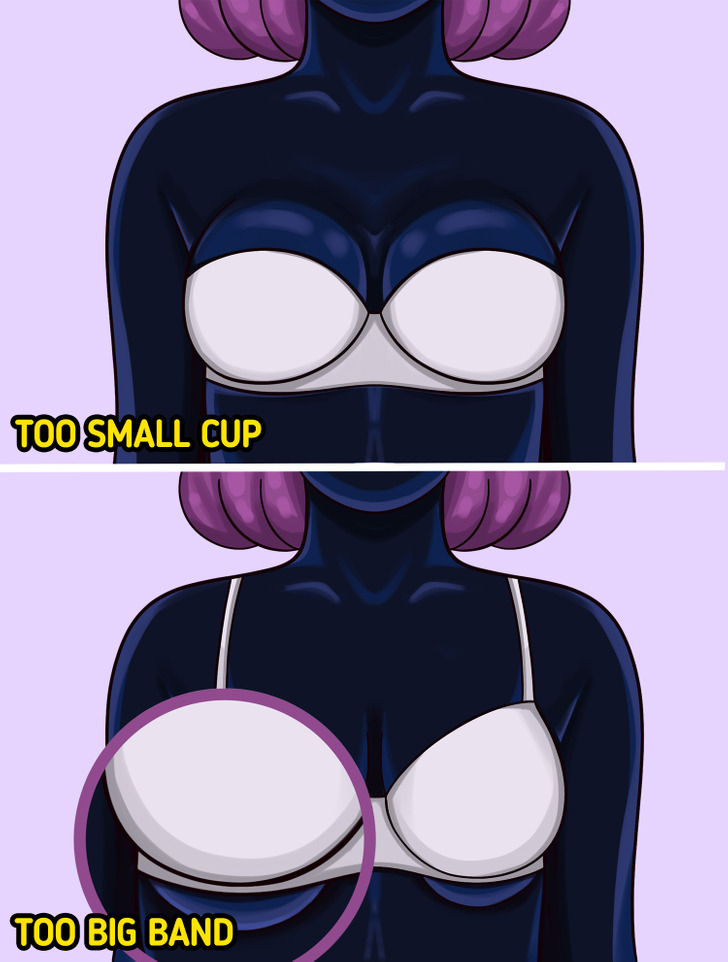
Your breasts will “escape” when the breast tissue doesn’t fit into the bra cup. The solution is all about wearing the correct size.
- If you have a bra with a cup that is too small, your breasts won’t have enough room in the cup — this will give them no choice but to move up or down.
- If your band size is too big, your breasts will find a way to escape from the bra. If the band is too loose, your breast tissue will also make a break for it.
8. Pinching bra
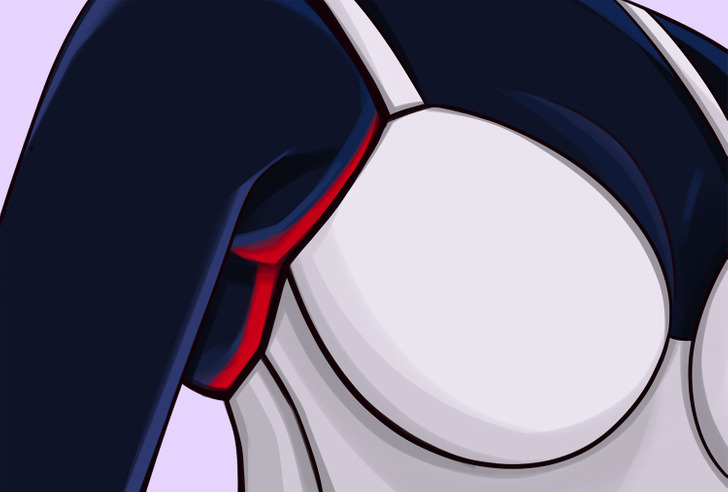
You won’t feel the underwire if you wear the correct size bra. Yet, underwires will poke or pinch you under your arms if you wear the wrong one.
- If your bra is too small, the underwires will pinch, and quad and side breast spillage will occur. Ensure your bra covers your breasts and the underwire sits without pinching.
9. Center wires not sitting flat
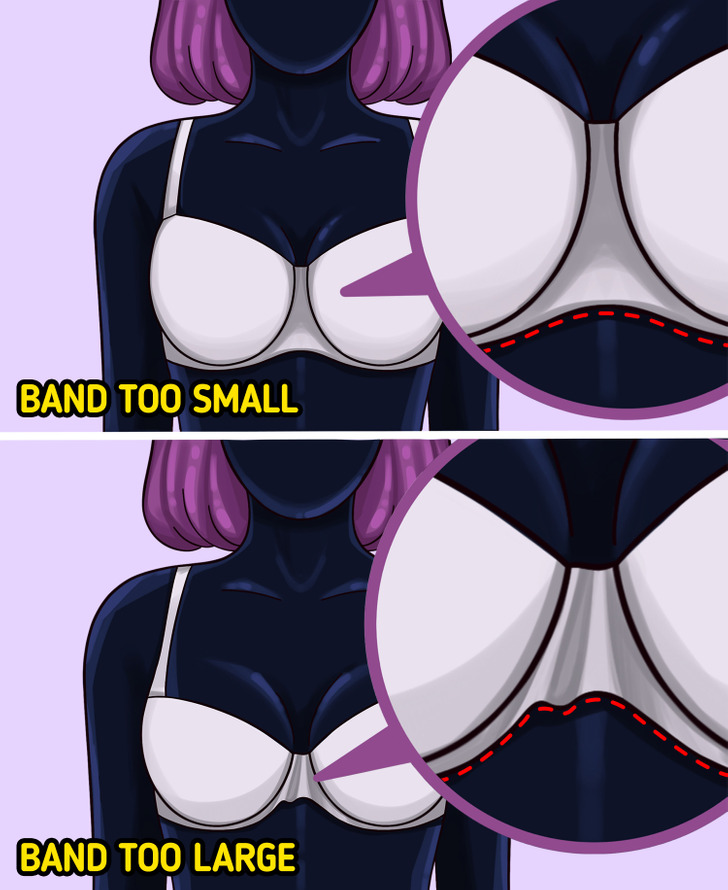
When the gore doesn’t sit flat, your breasts pressure the wires, which may bend or break at the ends. If the underwire sits on your breasts, this is an indication that the bra doesn’t fit correctly.
- If the band is too large, it’ll pull the underwire close to you and separate the breasts. In this case, you can opt for a smaller band size and adjust your cup size.
- If the cups are too small and aren’t deep enough, the bra will only cover the front of your breasts. Try a larger cup size. This way, you won’t need to change the band size.
- If your breasts are full, round, large, or close-set, opt for bras with deep cups and strong underwires. You can also try bras with low center wires.
Bonus 1: ways to prevent uncomfortable reactions to your bra
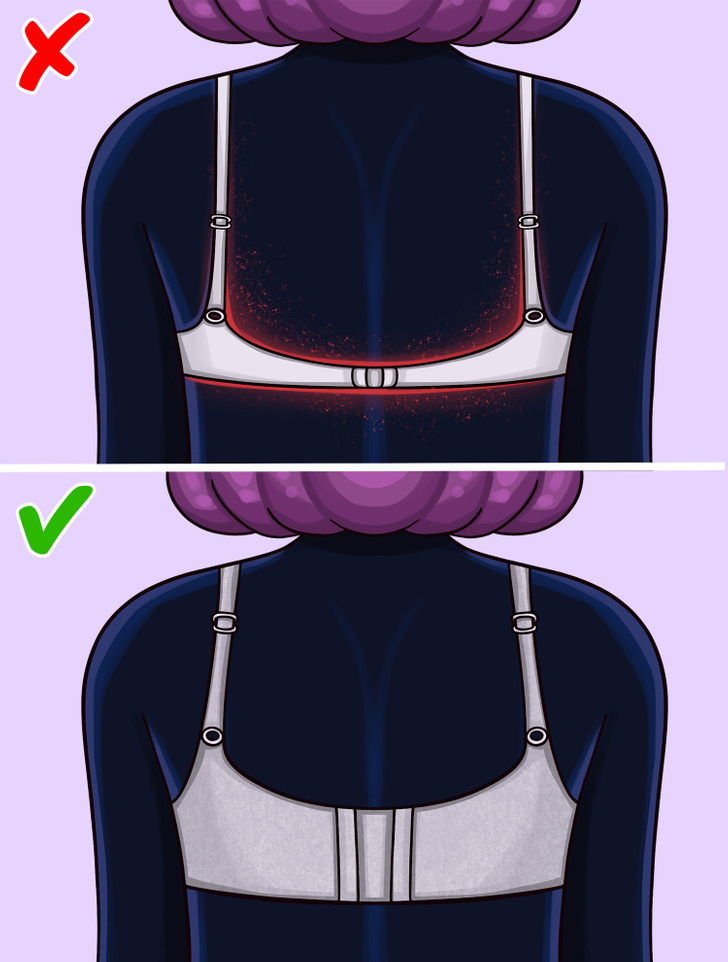
Some people may have sensitive skin or health concerns, like allergies, excessive perspiration, etc., and it’s normal to have that uncomfortable feeling while wearing a bra, regardless of if you’re wearing the correct size or not. Don’t worry about this — there are so many solutions.
- If you have allergies to elastic, latex, etc., you can try cotton bras with adjustable cotton straps.
- If your bra clips are made of nickel, and you are allergic to them, you can opt for plastic, coated, or painted metal fasteners, clips, and snaps.
- If you have perspiration issues, consider breathable cotton and moisture-wicking bamboo materials.
- If you develop an irritation to bras with a cotton content that isn’t high enough, you can consider wearing a fitted camisole made of a comfortable material underneath your adequately fitted bra.
Bonus 2: tips to wear a bra correctly
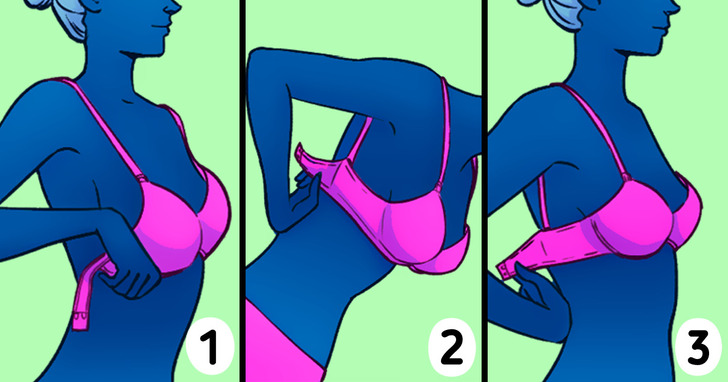
Some people use the flip-and-turn method, but we don’t recommend it since it may ruin your bra’s elasticity. You can become a pro at wearing a bra, and here is how:
- After ensuring the cups are perpendicular to the floor, insert your arms through the straps.
- Your cups must cover your breasts completely. Stretch the straps and backband gently and clip it at the back using its hooks and eyes.
- Fasten and adjust your bra straps using its metal sliders.
Bonus 3: Spice up the back stripes of your bra
- Instead of buying different bras or not wearing them because they are visible, spice up your looks by adding accessories.
- If you have a dress with an open back and don’t have the correct bra, redo it. Take off the bra and place it on a surface unfastened.
- Place a pearl necklace near the end of it.
- Fold the bra straps and glue them, putting the necklace in between.
- Do the same on the other side of the bra with the same pearl necklace. Try it on and adjust the high of the pearls from the back.
